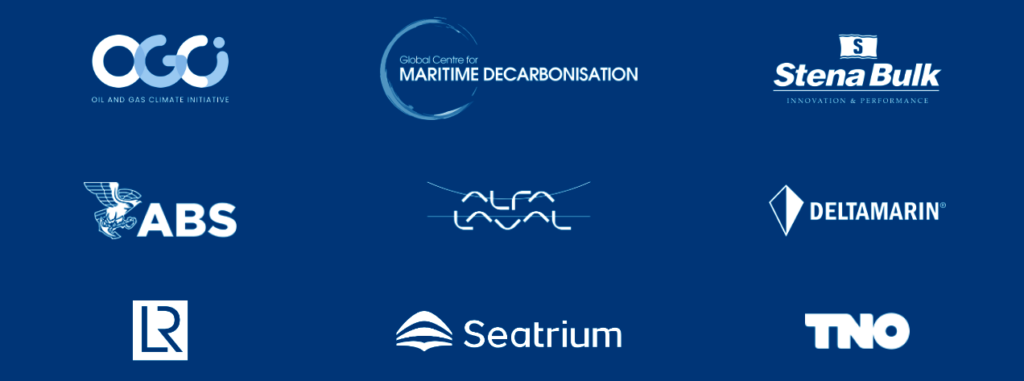
Engineering study charts potential of carbon capture technology to help decarbonize shipping
LONDON / SINGAPORE : A project assessing the technical feasibility of onboard carbon capture and storage (OCCS) in the shipping sector, carried out by the Oil and Gas Climate Initiative (OGCI), the Global Centre for Maritime Decarbonisation (GCMD) and Stena Bulk together with a consortium of the world’s leading maritime organisations, has concluded that the technology has the potential to help maritime transport significantly reduce its greenhouse gas emissions.
The project, Realising Maritime Carbon Capture to Demonstrate the Ability to Lower Emissions, (REMARCCABLE) was supported by a consortium comprising American Bureau of Shipping, Alfa Laval, Deltamarin, Lloyd’s Register, Seatrium, and TNO. It aimed to assess the viability of deploying carbon capture systems on vessels with minimal impact on operational constraints.
The engineering project analysed the design and cost implications of retrofitting a carbon capture system on the medium-range tanker Stena Impero. It found that the technology could reduce the vessel’s carbon dioxide (CO2) emissions by as much as 20% per year, with a fuel consumption penalty of just under 10%.
The cost of building and installing the full system on the Stena Impero is estimated at US$13.6 million, with an abatement cost of avoided CO2 for the first-of-a-kind prototype evaluated at $769/ton CO2. However, the consortium believes that further research and development will drive down costs, making OCCS increasingly viable for the shipping industry.
The study also looked at incorporating OCCS on newbuild vessels, with the findings that improvements to capture rate and fuel penalty may be achieved using more efficient engines, heat pumps, and alternative solvents.
Dr Michael Traver, head of OGCI’s Transport Workstream, said: “This study is a major milestone in understanding the potential of using carbon capture technology to decarbonize the shipping industry. The technical feasibility demonstrated in the project is highly encouraging.
“OGCI is committed to collaborating with the maritime sector to accelerate the deployment of lowcarbon solutions and drive the industry towards a sustainable future.”
Professor Lynn Loo, CEO of GCMD, said: “OCCS has gained traction in recent years as a feasible approach to meet the 2023 IMO revised GHG emissions reduction targets. However, its adoption faces numerous hurdles, including the need to balance the tension between maximising CO2 capture rates while maintaining commercially acceptable CapEx and OpEx. This study provides quantitative insights on managing the trade-offs between the actual cost of operating OCCS and its emissions reductions potential.
Loo added: “For OCCS systems to be practical, the industry needs to manage captured CO2b effectively. To this end, GCMD has previously completed a study to define the operational envelope for offloading onboard captured CO2, contributing to the whole-of-system approach to emissions reduction via carbon capture.”
Erik Hånell, President and CEO of Stena Bulk, said: “This may be expensive for first movers, but the consortium believes that further research and development will drive down costs, making OCCS an increasingly viable solution for the shipping industry.
“The results will be instrumental for not only us, but for the whole sector, to evaluate the operational and commercial opportunities, as well as the challenges when capturing CO2 at sea.”
Hånell added: “Together, we can work towards a sustainable future for shipping.”
The consortium partners added that many challenges remain to be addressed.
On the regulatory front, the industry awaits guidance from IMO’s Correspondence Group tasked with developing a framework for OCCS in MEPC 83.
On the operational front, challenges include recurring additional costs due to fuel penalty, amine solvent replenishment, manpower, maintenance and offloading services.
Offloading captured CO2 is in its nascency, with a lack of national and port policies for accounting captured CO2 and its final deposition. There is also a lack of infrastructure at ports to support offloading and storage.
Therefore, collaboration and support from stakeholders across the value chain will be needed to develop offloading infrastructure and onshore storage. Logistical and policy support for permanent sequestration or utilisation of the offloaded CO2 will also be necessary to encourage the adoption of OCCS solutions.
The full project report, available both on the OGCI and GCMD websites includes detailed technical specifications, cost projections, and recommendations for further development and implementation of OCCS technology in the shipping sector.
